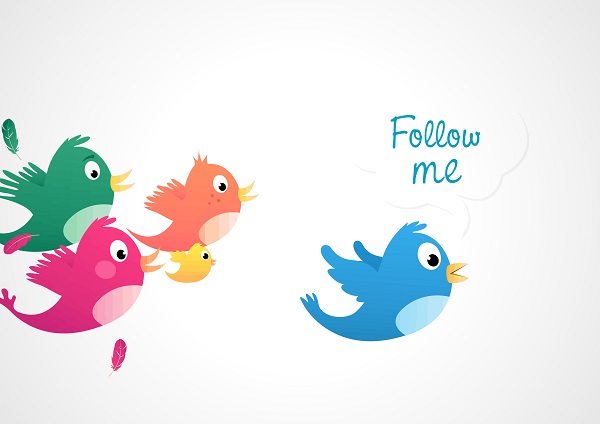
Are you being followed by fakes?
Have we, as a society, taken things too far? Have we reached an unacceptable level of deception and indeed fraud on the internet?
Is this another case of a minority destroying something that was of enormous benefit to mankind and relegating it to the ever growing junk pile evidencing our new society’s underlying desire to spoil and destroy?
Is this why Donald Trump may be right when he claims the election is rigged? I am not suggesting the US election system is corrupt; but I am referring to our psychological herd complex and those who choose to abuse this aspect of human behaviour. You will know part of the answer by the time you read this article, which is written three weeks from the election date.
I am talking about ‘bots’, a word for robots, one example of artificial intelligence used to interact with people. Social media provides an ideal platform for this with Twitter and Facebook leading the league table.
You may have heard of Microsoft’s disaster recently. The bot, known as Tay, was targeted at 18 to 24-year-olds in the US and was designed to become “smarter” as more users interacted with it. Instead, it quickly learned to parrot a mass of anti-Semitic and other hateful invectives that human Twitter users started feeding the program, forcing Microsoft to shut it down. In brief, the bot learned to parrot hateful tweets that human Twitter users started feeding the program.
Microsoft created Tay as an experiment to learn more about how artificial intelligence programs can engage with web users in casual conversation. The project was designed to interact with and ‘learn’ from the young generation of millennials. That experiment was a failure but the technique is not new. It is used by many establishments including our own ABC. Why is the ABC doing this?
In their own words: “For large media organisations like the ABC, it can be a daunting or impossible task to respond to the huge number of questions our audience has about the news. We try very hard to engage directly with our audience, but ultimately the volume of correspondence we receive, especially on social media platforms, is just too great.
“Increasingly, the ABC’s audience is looking to engage with the news in places and formats which feel most natural to them and for a large part of our audience that means social messaging platforms like Twitter or Facebook Messenger.
“As a response to this, media organisations across the world are experimenting with bots as a way to provide a more meaningful and personalised news experience.”
All that sounds innocent enough and harm should not come from this. But there always is that word again. However… Social bots, or chatter bots, are software designed to communicate autonomously with humans in social networks. Often, they end up poisoning the atmosphere for the users.
Political actors, today’s jargon for the perpetrators, are using algorithms and automation to sway public opinion, notably through the use of “bot” accounts on social networking sites. Yet I cannot find anyone who accepts the responsibility for social networking sites and other platforms to respect human rights, such as freedom of expression and privacy. Nowhere is there a set of standards for chat bots operating on these platforms. Nor can I find ideals such as the indicators laid out by Ranking Digital Rights, a non-profit research body, working with international partners in an attempt to set global standards.
They suggest a good foundation framework for the use of bots on social networking sites should have three components: bots should clearly be labelled as such, they should not contact other users without consent and information collected by them should only be used for disclosed purposes. With this lacking the system is being compromised and corrupted.
In a world where nothing counts unless you have taken a square-shaped photo and written about it in 140 characters, it’s hard not to feel like it’s increasingly important to be popular online. After all, who can deny the rush of adrenaline that comes when your Instagram photo gets so many likes it moves from usernames to double digits, or the feeling of warmth that accompanies a ‘retweet’ from a stranger. Meanwhile, you might feel self-assured at work, but the crushing disappointment of a Facebook post that sits unshared on your wall appears to really hurt. And these are not just my words!
So the idea that some people would resort to buying ‘fake followers’ to make themselves look successful on social media is not surprising. You may have seen the job adverts insisting that only applicants with ‘3000 Twitter followers or more’ need apply.
So what exactly are ‘fake’ followers? Fake followers is a term used for people following you for illegitimate reasons. At the worst end of the scale you can actually purchase followers by the thousand to make your account appear more popular. Then there’s the ‘bot’ and ‘spam’ accounts deliberately tweeting out advertising or accounts being generated to build up followers just to be sold as a list later on.
Because these followers are not interested in your tweets, they are not really offering you any benefit and your total number of actual followers is misrepresented. Fake followers can harm your credibility, will lead to less engagement, and is even against twitter’s terms of service. So ‘fake’ followers are bad news, but how many do you have?
There are a number of useful tools out there that will analyse your twitter account’s followers and give you a statistical breakdown of the good and the bad. Here are a couple worth trying: The Fake Follower Check tool will break down your followers into three categories; fake, inactive and good. Try it at www.statuspeople.com and www.twitteraudit.com will give you a second opinion.
Interestingly, Donald Trump has 7,327,049 real and 4,645,254 fake followers while Hillary Clinton has 6,058,163 real and 3,542,729 fake followers. These ‘fakes’ may well trigger the herd complex and so produce and unintended outcome such as Brexit, which was just such an example.
The ability to manipulate is too easy! If you want to start your own fake campaign just look to take advantage of www.prankmenot.com who, in their words, offer a tool to form perfect copy generated by our Facebook status generator, tweet generator and message generators and start pranking now! Make them believe something crazy!
It also raises the question of the reliability and perhaps bias of news services that add ‘trending tweets’ to their headline broadcasts? Once again, it is not the system but the covert abuse of it.
My best wishes for the season to you all!
Arvo Elias is from web consultancy firm Cybercons. He has been a long time contributor in Resort News, make sure you’re subscribed so you can check out his monthly Intonet installment.






